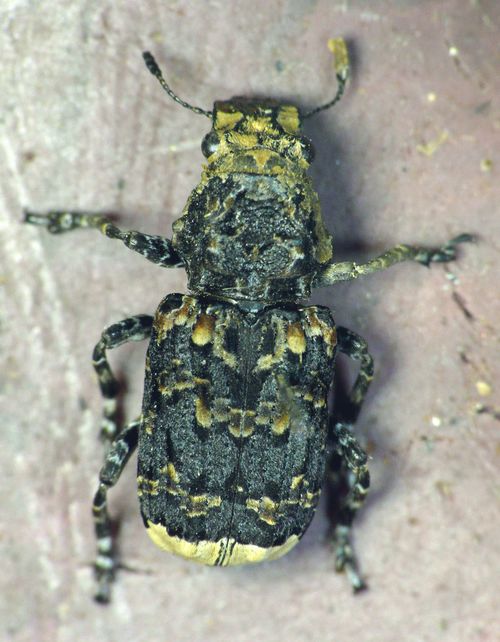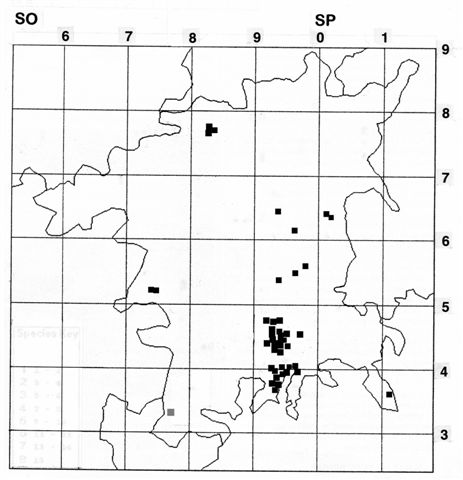A Notable B ‘bird dropping’ — an anecdote
Martin Skirrow
Despite a lifetime of fascination with the natural world, I never cease to be astonished and enlightened by it. On 11th April 2014 I saw what I took to be a small cylindrical bird dropping exposed on a slate ledge at the foot of a building on the farm where I live in Berrow (SO777339). I was on the point of ignoring it when I noticed that it had a distinct symmetry. On picking it up I found it to be hard and dry without any obvious projections or excrescences. As my insect room was nearby, I took it in for examination, but as I placed it under the microscope I thought “What on earth am I doing playing around with this bit of obvious bird excrement!” But then came revelation: a dorsal suture, two eyes and a snout; and underneath, legs and antennae tightly folded in their grooves and flush with the body. I presumed it was long dead; but these appendages were movable with a seeker, so perhaps it had not been dead long. Five minutes later it walked off and sought exit from its container!
It appeared to be a large weevil (01) and initially I thought it was Platystomos albinus, but Harry Green, without seeing it, raised the possibility of it being Platyrhinus resinosus (Anthribidae), which is indeed what it turned out to be. I was initially misled by an on-line photograph of P. resinosus wrongly labelled Platystomos albinus (beware of unsubstantiated postings!). Larvae of P. resinosus have been found in the Cramp-Ball fungus Daldinia concentrica, and its common name is Cramp-Ball Fungus Weevil, but it has also been called King Alfred’s Cakes Weevil after the popular name for the fungus. The beetle appears to be dependent on the occurrence of the fungus, which grows on dead wood, especially beech and ash. There is no beech at the farm, but many mature ash with dead wood both on trees and fallen. The fungus has been seen regularly, and our policy to leave such dead wood in place.
The species is classed as Nationally Scarce Notable B with a distribution mainly from the Severn valley through the Midlands and north to Yorkshire. In Worcestershire it has been recorded almost every year since 1991, mostly from Bredon Hill, Tiddesley Wood, and Mill Rough near Drakes Broughton, all areas where there is old woodland (02). Further away, several beetles were found by Alan Brown in Springfield Park in the Kidderminster area in June 2011 (Brown 2013). The present record is also an outlier, but in the far south west of the county (grey square on the map). It is likely that the beetle occurs in other areas where there is ample dead wood and fungus.
Acknowledgement
My thanks to Simon Wood for extracting records of Platyrhinus resinosus from the Worcestershire Biological Record Office’s database.
Reference
Brown, A. 2013. Coleoptera of note found in the Kidderminster area 2010-2013. Worcestershire Record. 35:21-27.
Images
01. Platyrhinus resinosus Cramp-Ball Fungus Weevil (Anthribidae). Martin Skirrow
02. Distribution of Platyrhinus resinosus in Worcestershire. Martin Skirrow.

